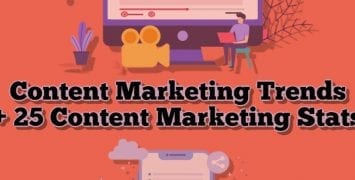Publishing fresh blog posts on a regular basis one of the most important ways you can create and build an audience of potential customers.
Not just any blog will do. You need to know how to connect with your readers. Writing great blog posts is a skill.
But it’s a skill anyone can learn! New to blogging? Don’t worry. Everyone’s got to start somewhere. Here are six tips for new bloggers:
1. Know Your Audience
No product or service appeals to “everyone.” You need to focus on the similarities found across your core audience. This called creating a Buyer Persona.
Also called a Customer Profile, a Buyer Persona is a detailed profile of a fictional customer of your brand. You use the Profile as a foundation for your marketing, advertising and outreach efforts. Each Persona should contain:
- Age
- Gender
- Marital Status
- Income Level
- Hobbies/Interests
- Education Level
Check out my post The Power of Buyer Personas for much more info, including a complete how-to guide.
2. Know Your Industry
No matter what product or service you sell, there is an entire industry surrounding it. This includes not only your competitors but also trade journals, social media influencers, forums and more.
You’ll want to connect into this network. Post on forums, leave comments on blog posts and develop connections with industry influencers. This will help strengthen your brand’s authority and trustworthiness among potential customers.
Research your competitors, too. Look for the following:
- What type of content is your competition creating?
- What primary keywords are they using? Are they important keywords they’ve overlooked?
- What are they doing right with their content and where can they improve?
3. Create Your Brand’s Voice
After you’ve researched your target customer base and your industry, you’re ready to create your brand’s voice. This your brand’s general tone and writing style.
The right voice depends on the product or service you sell as well as what your target audience responds to. For instance, check out Taco Bell’s twitter account. They’re informal, fun and responsive to fans.
Of course, that voice isn’t appropriate for every brand. Your brand might require a serious voice or something else entirely.
Once you’ve established your brand’s voice, keep it consistent across all of your marketing. Not just your website but social media posts, emails, infographics and more.
4. Use a Content Calendar
Blogging is time-consuming. I totally understand how it can fall by the wayside while you concentrate more on SEO and other aspects of your business. But you want to publish new content on a regular basis. This helps build an audience while also showing the search engines that your brand is active.
I’ve found that a Content Calendar is useful here. As the name implies, this lets you keep track of when and what you want to publish. Using a calendar helps me stick to a schedule.
CoSchedule is a popular content scheduler and one I’ve had success with. To be honest, however, a basic Google Sheet or Excel spreadsheet will work just fine, too. The important thing is creating a system you like and sticking with it.
5. Use the Skyscraper Technique
Think of each piece of content as a building in a city. In order to get the most attention, you’ll want to have the tallest building.
Fortunately, you don’t need to build from the ground floor. The Skyscraper Technique is when you find existing content, improve upon it and then publish the new version yourself.
This more than a simple re-write. You need to find new information while improving the voice to engage with your audience in a meaningful way.
The best version of any subject is going to be rewarded by the search engines while attracting a large audience. This also helps your brand position itself as a leader in your industry.
6. Use Descriptive Headlines
People have short attention spans when it comes to reading content online. You need to grab the reader with a short, descriptive headline.
Bad Headline: “Grow Your SEO with these Strategies”
Good Headline: “10 Fast, Simple Tips for On-Page SEO Success”
Notice how the second headline is more specific and direct. The reader understand what to expect, but the specifics are only available inside the article.
You can create compelling blog posts, even if you don’t have a ton of blog writing experience. The six tips above will help you start on the right foot.




